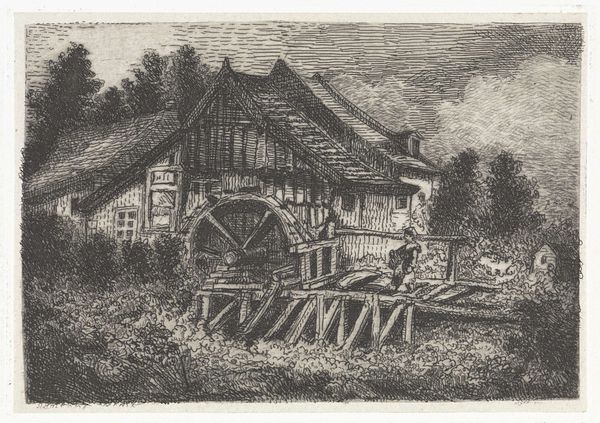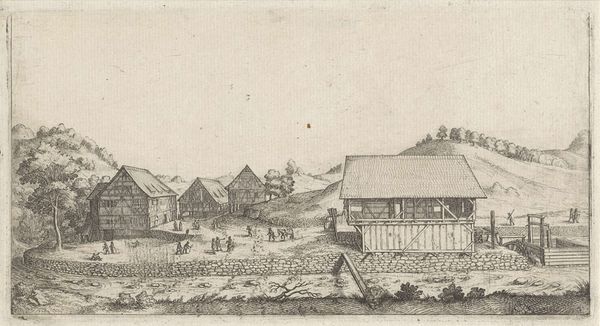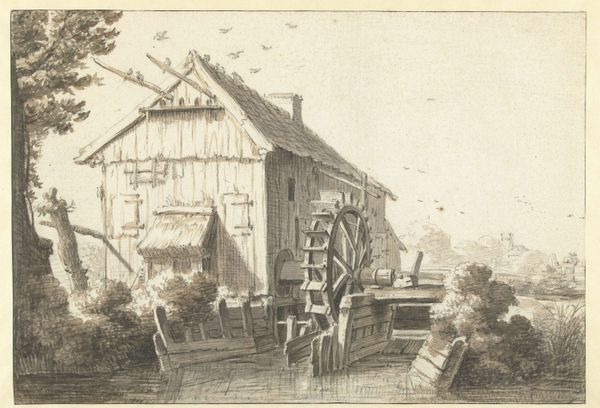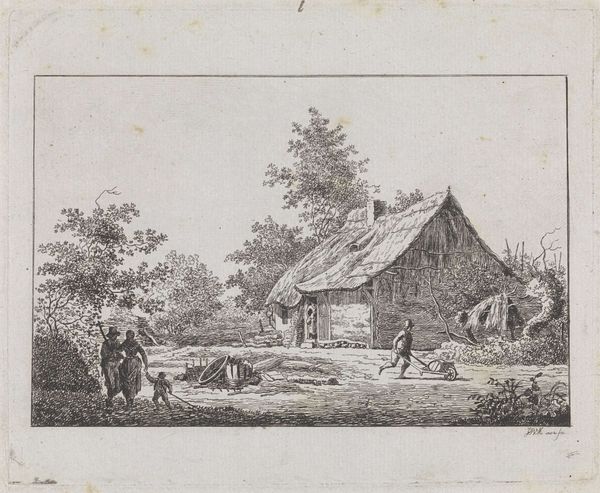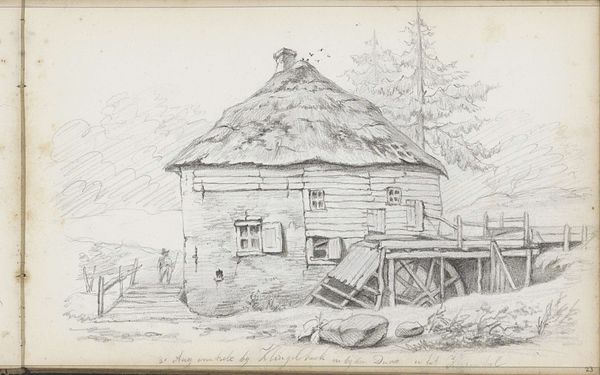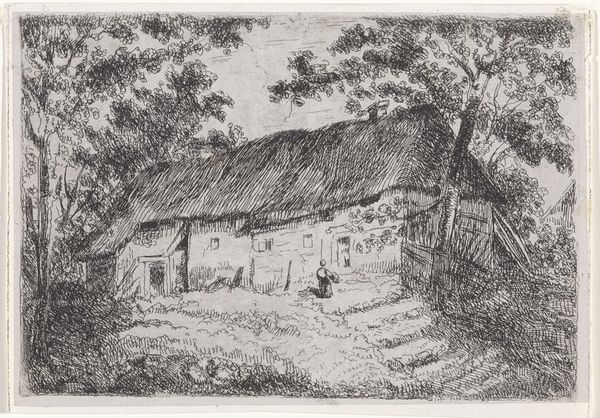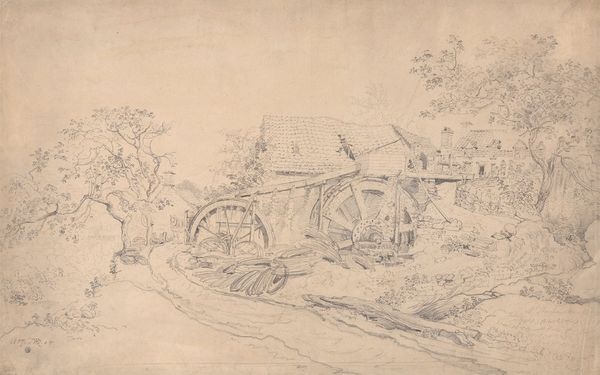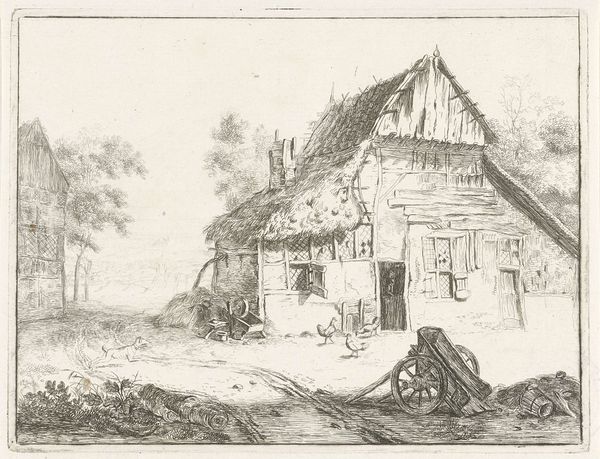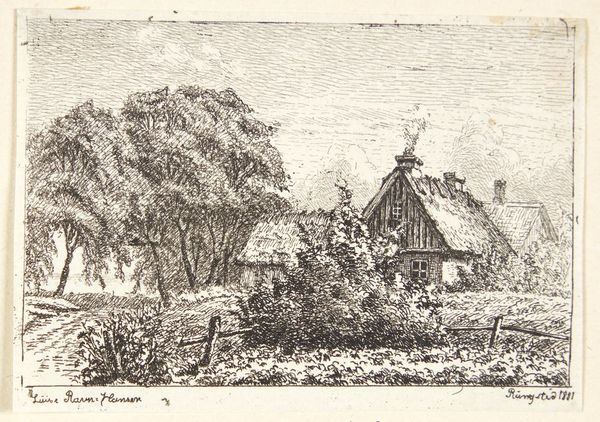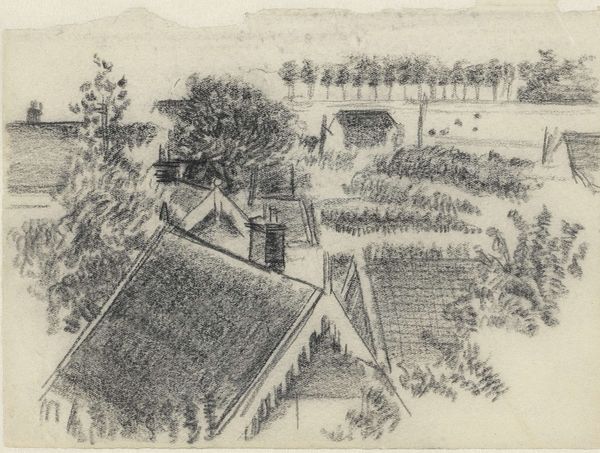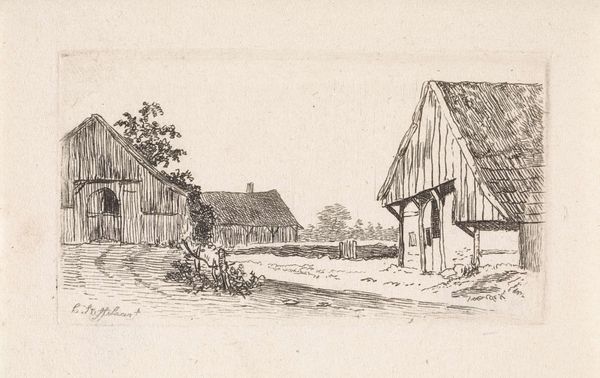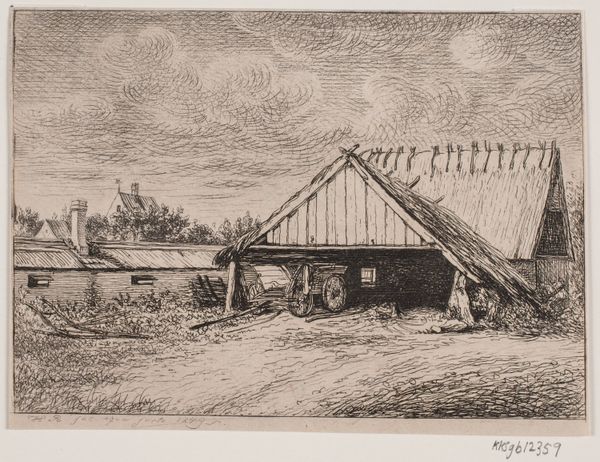
drawing, ink
#
drawing
#
pen drawing
#
landscape
#
ink
#
realism
Dimensions: height 109 mm, width 152 mm
Copyright: Rijks Museum: Open Domain
Arnoud Schaepkens created this etching of a watermill in the Netherlands sometime in the 19th century. It gives us a glimpse into a time when the Dutch landscape was dotted with these mills, central to the economic life of local communities. The image is made through the careful arrangement of lines. We see a mill with its large wheel, the engine of rural industry. The surrounding foliage and figure on the bridge suggest the everyday life interwoven with this industry. Schaepkens, working in a period of increasing industrialization, may be reflecting on the value of more traditional ways of life. Watermills in the Netherlands were not just cogs in the economic machine; they were symbols of Dutch ingenuity in managing water, a constant preoccupation in this low-lying country. They were often community hubs, owned and operated collectively, fostering a sense of social cohesion. To understand this work more fully, one might delve into local archives, exploring records of mill ownership, community interactions, and the changing economic landscape of the Netherlands in the 1800s. Such research helps us appreciate the role of art in capturing and commenting on its own social and institutional context.
Comments
No comments
Be the first to comment and join the conversation on the ultimate creative platform.
